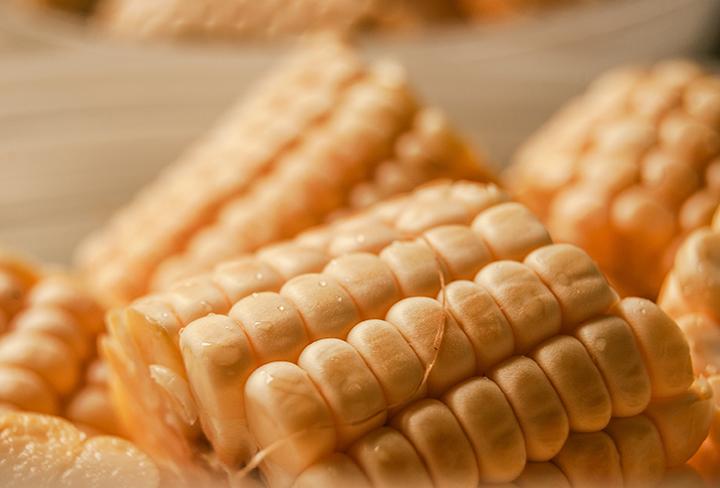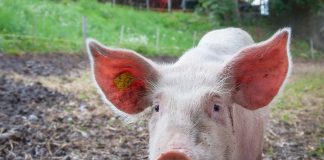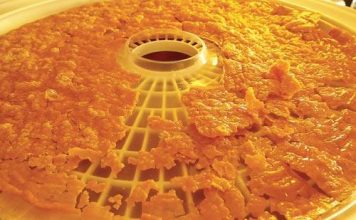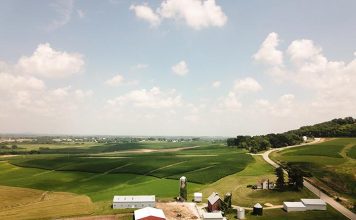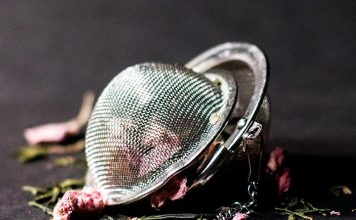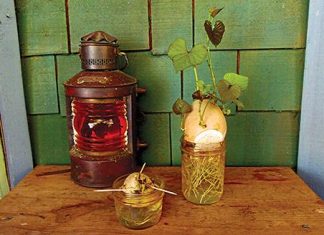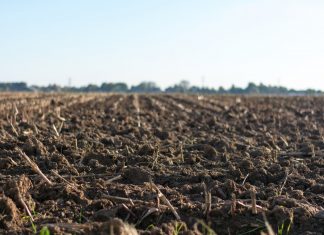| Issue #81 • May/June, 2003 |
Napoleon said that an army marches on its stomach. Frederick the Great defined an army as a group of men who demanded daily feeding. One can imagine the nutritional problems of a large group on the move. Armies through the ages have tried everything from bottling snails to bringing along herds of livestock. It’s difficult to keep mess kits and cooking equipment adequately clean under rugged field conditions, so illnesses were rampant. In most campaigns, more troops have been lost to sickness than to the enemy. Sometimes it was impossible to deliver food to the front line troops who needed it most. Hunger has ended many ambitions. The search for transportable calories, the “research and product development” of earlier armies, has finally resulted in the MRE. “MRE” stands for “Meal, Ready to Eat.”
|
In accordance with the Office of the Surgeon General’s nutritional requirements as identified in Army Regulation 4025, Nutritional Standards for Operational Rations, they will survive a 100 foot drop from a helicopter with no parachute, endure inclement weather and survive temperature extremes from minus 60 degrees Fahrenheit to 120 degrees Fahrenheit and have a minimum shelf life of three years at 80 degrees F and last for six months at 100 degrees F. Now people on the move can have a meal on demand by carrying it with them. Mess kits and pots and pans have been eliminated. MREs set the current standard for traveling rations, but they aren’t magic. Those who use them are encumbered and inconvenienced by the weight and bulk of plastic utensils, condiments, heaters and a remarkable amount of packaging. Having to cook them to make them appealing wastes time. (I know, they’re designed to be eaten cold if necessary. Have a few dozen that way and then come back and tell me about it.) And if you’re buying your own MREs rather than having them issued by Uncle Sam, they’re prohibitively expensive.
If you have a need for trail foodstorable, transportable, convenient, affordable and palatable caloriesmaybe we can learn something from the old ways. Jerky, pemmican, hardtack, and parched corn are traditional travel rations that have passed the test of time. They are products that have been produced, relied on, and refined for centuries, even millennia. Just a touch of modern technology and convenience makes them even better today.
Jerky, pemmican, hardtack, and parched corn are ways to put game, livestock, wild berries, and garden produce by in times of plenty. Easily made, transported, and stored, they became frontier staples for travelers, hunters, and warriors. They are still excellent trail foods and emergency rations.
I take jerky, pemmican, hardtack, and parched corn along on wilderness trips. Supplemented by some tea, salt, and rice and whatever I can catch or gather, I can exist pretty comfortably and feel healthy doing it. Even if I take more modern foods along as well, the historical perspective is fun. They’re comforting to have in reserve, too, in case the bush plane doesn’t show up on time, or the wind keeps your canoe ashore for a couple extra days. (Their only drawback as emergency rations is that I’m tempted to eat them before I’m truly hungry).
Jerky
Jerky is said to keep for years, but it’s so good that around my house it’s shelf life is usually measured in minutes. Here’s my favorite recipe:
1½ lbs. very lean ground meat(Any meat that isn’t fatty, including fish and birds. Avoid pork or bear.)
¼ cup soy
¼ cup Worcestershire sauce
1 tsp. Liquid Smoke
½ tsp. garlic powder
1 tsp. onion powder
1 tsp. black pepper
Combine all the marinade ingredients and pour over the meat. Refrigerate until the meat absorbs the solution. (Chilled meat is also firmer and easier to work with.) Roll the ground meat out and cut into strips about 1/4-inch thick and an inch or two wide. The strips can then be dried either on plastic screens or in a food dehydrator. Our forebears often simply draped strips of meat over branches; they built a cool, smoky fire underneath to keep away flies if necessary.
Pemmican
At its simplest, pemmican is only powdered jerky bound together with melted fat. It tastes far better than it sounds. When you’re working hard outdoors, especially in the cold, listen to your body. Pemmican will satisfy your craving for calories in ways that a candy bar won’t. It’s said to provide every essential but vitamin C. The concept of pemmican was borrowed from the American Indians. It begins with lean meat, traditionally of bison, moose, elk, or deer. It was dried over a fire or in the sun and wind. The dried meat was ground and shredded between stones. Sometimes ground dried berries, nuts, or honey were added. Finally, melted fat and/or bone marrow grease were mixed in. Pemmican could be eaten as is, or made into a soup or stew. When available, mint leaves or wild onions could be added for flavor.
|
The Hudson’s Bay Company bought pemmican from the Indians and later the Metis as the staple food of their fur brigades and established a standard of quality. It paid a premium for “sweet pemmican” made solely from the best of lean meatspreferably from bison cows and young bullsand only bone marrow grease. Pemmican production became the most important industry on the high plains next to the fur trade.
Pemmican was originally stored in the stomach or intestines of animals. Indians shaped it into small round cakes. The Hudson’s Bay Company specified that it be stored in 45-kg. green bison skin bags called “parfleches,” sealed with tallow. As the parfleches dried they shrank, in effect vacuum-sealing themselves. They would keep for years. During the fur trade, it was reckoned that pemmican was nutritionally worth four times its weight in meat. Hudson’s Bay Company pemmican consisted of 50% dried meat and 50% fat/marrow.
“Modern” pemmican
Very dry jerky. Use deer, moose, caribou, or beef (not pork or bear).
Fresh beef suet. (the raw fat from around the kidneys and loins)
Any seedless dried fruit not preserved with sulfites (optional)
Cut the suet into chunks and render (melt) it over low heat, until it becomes a rich golden-brown liquid. Continue to heat until all moisture is removed. It’s important to remove all water from the fat to prevent it from going rancid. Strain it and throw away the solids. Allow it to coolit will turn white. This is tallow. Rendering twice will make the tallow harder and give it better keeping qualities. Tallow, when cooled, resembles candle wax in color and consistency. In fact, if you have any left over, it can be made into candles. Lewis and Clark took cotton wicking along with them for that purpose, and wrote their journals by the smokey light of tallow candles. Add some beeswax or paraffin to make them burn better.
In a blender, grind the dried meat to a powder. Chop or grind the dried fruits and mix them with the dried meat powder. (Many who have acquired the taste for pemmican, myself included, prefer it without any fruit.)
Heat the tallow again. Make sure it is as hot as it can get without smoking. (Smoking means burning.) Pour the tallow into the dried meat mixture, adding just enough to moisten the particles. If it’s too cool you will have to use a lot of it to stick the mixture together and the pemmican will be too rich and fatty. At this point, if the tallow is cooling down too quickly to allow it to soak in properly, you can microwave the whole mixture to warm it up.
Form the warm pemmican into blocks or bars or patties. Allow them to cool and wrap in waxed paper or store in plastic bags.
“Peanut butter” pemmican
If you can’t quite bring yourself to eat the real thing yet, try this substitute:
1 part jerky
1 part peanuts or pecans, unroasted
1 part raisins
1 part any seedless dried fruit(s) not preserved with sulfitesapples, peaches, blueberries, etc.
Peanut butter and honey, in a two-to-one ratio
Cayenne pepper, to taste (optional, but contrasts nicely with the sweet fruits and honey.)
|
Powder the jerky in a blender. Add fruit and nuts. Microwave honey and peanut butter to soften them, then blend them into the mixture. (Use less than you think you’ll need, just enough to bind everything together. If you get it wrong, it’s easier to add more peanut butter and honey than to add more of everything else.) Add cayenne pepper, working it in thoroughly. Store in plastic bags.
Hardtack
Essentially a very hard cracker, hardtack was the standard traveling fare for soldiers, sailors, and pioneers up through WWI. Originally made from only salt, flour, and a little water, it was universally despised. It was traditionally either dipped in coffee, or soaked in hot water and then fried in bacon drippings. This updated version is far more healthy and tasty, and just as easy to store and transport.
2 cups fresh whole wheat flour (Best if you grind it yourselfwheat berries lose nutritional value rapidly once ground.)
2 cups fresh corn meal (Again, best if you grind it yourself right before baking.)
½ cup wheat germ
½ cup rolled oats
1 Tbsp. brown sugar
1 Tbsp. salt
1¾ cups water
Mix dry ingredients thoroughly. Add water. Knead until moistened but not sticky. Roll ¼ inch thick. Cut into 3-inch squares or rounds. Place on ungreased cookie sheets. Score with a knife to facilitate breaking later. Bake at 350 degrees for 30 minutes. Can be stored indefinitely in an airtight container.
Parched corn
Corn was the staple grain on the American frontier for pioneers and Indians alike, as it was (and is) relatively easy to grow, harvest, and process without machinery. There are four basic types: flour, dent, flint, and sweet. All may be dried on the cob, and may then be stored indefinitely. If you want to go modern, then just buy frozen whole kernel corn at the grocery store and dehydrate it.
Parching corn makes these hard kernels softer for your teeth and much more digestible. It’s a lightweight, high energy food that was carried by Indian warriors and hunters. It was also considered a treat by pioneer children. It can be eaten as is, or ground and added to soups and stews. You’ll be surprised at how it revitalizes you.
Heat a small amount of butter or lard or oil in a skillet on low. Wipe the skillet with a paper towel so that only a thin coat remainsjust enough to prevent the corn from sticking. Pour in enough dry kernels to almost cover the bottom of the pan. Stir constantly to prevent burning. The kernels are done when they swell and turn light to medium brown and begin to pop. It takes from about one to five minutes. Dump the corn out onto a plate lined with a paper towel to soak up any remaining oil or grease, then re-oil your skillet and do some more. Enough for a day will fit in a plastic bag in your pocket.
On your next outing, try traveling light. Jerky, pemmican, hardtack, and parched corn will keep you going all day, without utensils to clean, or trash to dispose of, or the need to stop and cook. For dinner, pemmican stewed with whatever greens or tubers you’ve foraged, thickened with parched corn and served with hardtack will give you a literal taste of days gone by.


